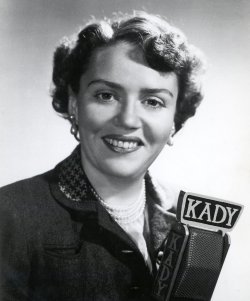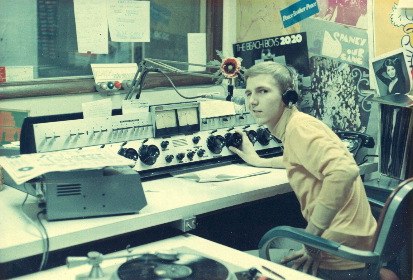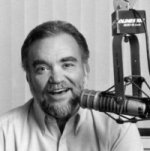Radio Articles
St. Louis Was Slow To Accept FM Radio
When Edwin Armstrong provided a demonstration of FM broadcasting to RCA’s David Sarnoff in 1933, he was successful in showing off “staticless” radio, but RCA and CBS were both eyeing a technology with even more commercial promise – one that sent live, moving pictures through the air.
Realizing that his project was not a corporate priority, Armstrong continued to develop FM on his own, and in 1941 the federal government authorized commercial FM broadcasting. It would be several years before St. Louisans heard regular broadcasts.
Part of that delay is due to the fact that the country was involved in World War II, but many other cities, some of which were significantly smaller than St. Louis, were active in FM development. It wasn’t due to any lack of support from Washington.
As early as 1939, several existing AM stations in the U.S. had been designated as Apex station operators, and two of them were in St. Louis: W9XPD (KSD owned by the St. Louis Post-Dispatch) and W9XOK (KXOK owned by the St. Louis Star-Times). Many of these Apex stations around the country evolved into FMs.
The FM band, like its predecessor AM, also underwent technical changes on the way to its current incarnation. Early frequencies ranged from 41.02 – 43.98 mHz for the Apex stations with 40 kHz separation, and by May of 1940, 15 FM stations were on the air in the U.S. A year later the number had risen to 24. In 1945 the Federal Communications Commission reallocated FM stations to higher frequencies, 84 – 108 mHz, with the lower end, 84 – 88 mHz set aside for non-commercial stations.
There were several false starts here. WIL-FM was authorized at 92.1 and later moved to 97.3; KMOX-FM was allocated 45.9 mHz but later dropped its application; KWK-FM was assigned to 95.3; KXOK-FM was at 93.7; KXLW-FM was at 101.1; KSD-FM went on the air in September of 1948 at 96.1; and KWGD-FM became a reality in December of 1948 at 98.1 in studios now occupied by Sinclair Broadcasting.
WEW applied for an FM station in 1942, received a frequency of 45.1mHz, and was later given 95.1. WIL-FM was also on the air in 1948, as was KFUO-FM at 104.1.
The early days of FM in St. Louis were not as exciting as the early days of AM. Government control precluded a lot of unauthorized experiments that had been the rule in the early 1920s.
The first programs on AM consisted of whatever station managers could find to put on the air. Most FM stations here provided simulcasts of what their co-owned AM stations were broadcasting.
By 1950, several stations had already pulled their literal and figurative plugs here, but some new ones had been added. The dial included KSLH (91.5), KXOK-FM (93.7), WEW-FM (95.1), KWK-FM (98.1), KFUO-FM (99.1), and WTMV-FM (102.5). F.C.C. records in 1958 list only three FMs here, KFUO-FM, KCFM (93.7) and KSLH. It appeared the fad of FM radio would not take hold in St. Louis.
(Reprinted with permission of the St. Louis Journalism Review. Originally published 11/1997)


